US election: Changes in four states that could boost Clinton
- Published

For the past 16 years, the electoral map for US presidential elections has been variations on a familiar theme.
Ohio and Florida are the key battlegrounds. A handful of other states - including New Hampshire, Virginia, Colorado and Iowa - count as smaller prizes in the quest to the reach the magic number of 270 electoral votes.
The battle lines form, the campaign foot soldiers take their usual positions, and voters in the rest of the nation sit back and watch.
Now, however, a smattering of polls have shown Democrat Hillary Clinton within striking distance in a number of states that were out of reach of her recent predecessors.
This means Mrs Clinton has a chance to expand the presidential playing field - and reports have surfaced that campaign strategists are contacting local party organisations to prepare them for an influx of unanticipated money and field personnel.

The key question is whether this expanded playing field represents a new normal reflecting population growth in the states that is friendly to Democrats or simply a Clinton post-convention polling high water mark that will eventually recede.
If this is the electoral lay of the land for the next three months, Mr Trump will have a particularly difficult time cobbling together the pieces necessary for a winning campaign. His path to the White House will be exceedingly narrow, requiring that he play defence on multiple fronts while carrying almost every Democratic-leaning state he targets.
The avenues to a Clinton presidency, on the other hand, would be many. It could go through the industrial Mid-west. Or the coastal South. Or the West. Mrs Clinton would have back-up plans. And back-ups for her back-ups.
Here's a closer look at four states that illustrate Mr Trump's challenges and Mrs Clinton's unexpected opportunities.

Georgia

Atlanta is a fast growing city
Electoral votes: 16
Last time carried by a Democrat: 1992
2012 results: Mitt Romney 53%, Barack Obama 45%
Recent poll: Hillary Clinton 44%, Trump 37%, external
Georgia is on Mrs Clinton's mind thanks to presidential matchup surveys showing her ahead by margins even greater than neighbouring Florida. Her campaign is reportedly poised to expand its operations there and spend money on advertising, external.
Since Mr Romney won there four years ago, the state has become more diverse, as the Atlanta metropolitan area continues to grow. For instance, in 2000 25.6% of the Georgia population was black. The number increased to 30.5% by the 2010 census.
According to a JMC Analytics survey, Mrs Clinton is being buoyed by overwhelming support from non-white voters and a 48% to 35% margin among women voters. In another Georgia poll, which shows Mrs Clinton with a smaller lead, she has a 11% advantage among college-educated voters - a segment Mr Obama lost in the state by 21%, according to a New York Times estimate, external.
Georgia will still be a challenge for Mrs Clinton, but Harry Enten of the election-analysis website FiveThirtyEight says there are some scenarios where it could prove decisive, external.
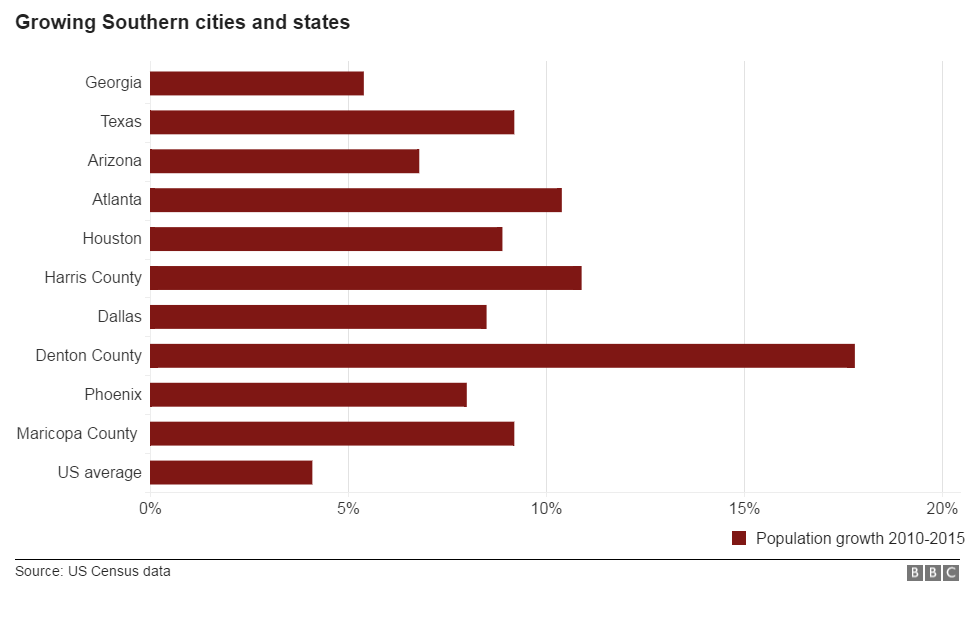
Three southern states - and their major urban and suburban areas - are among the fastest growing in the US
If Mr Trump carries the northern industrial states of Pennsylvania, Ohio and Wisconsin - which went to Mr Obama - Mrs Clinton could still prevail if she takes Georgia, Virginia and North Carolina as part of a "New South" strategy.
There's a certain logic to this theory, given that the forces that would push those industrial states toward Mr Trump on the back of white working-class support would likely move the more diverse Southern states toward Mrs Clinton.
Prognosis: Democratic electoral power has been following population movement down the US East Coast over the past decade.
Mr Obama carried Virginia twice and almost won North Carolina for a second-straight time in 2012. It's a rising tide that may lift Georgia, as well. Even the formerly arch-conservative South Carolina could be coming into play.

Arizona
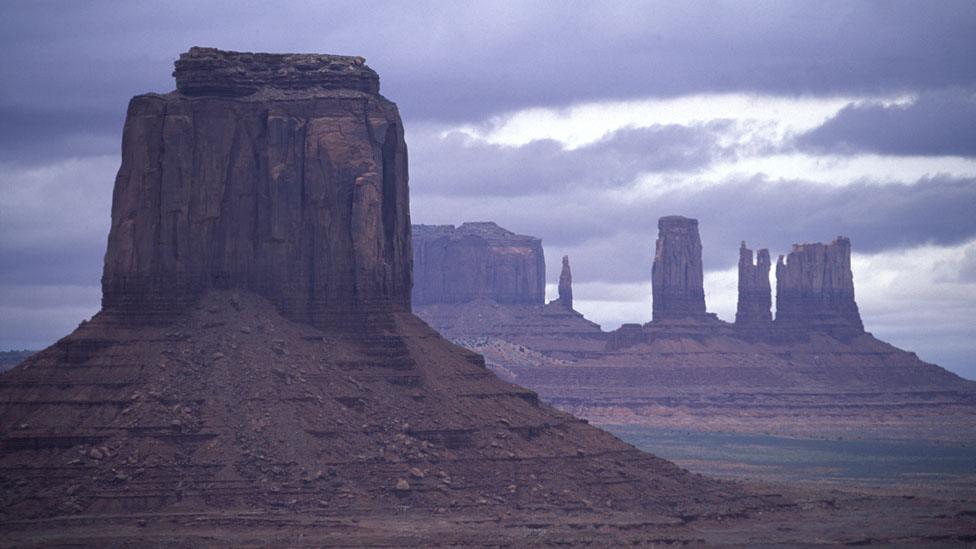
Electoral votes: 11
Last time carried by a Democrat: 1996
2012 results: Mitt Romney 54%, Barack Obama 44%
Recent poll: Donald Trump 44%, Hillary Clinton 42%, external
Like Georgia, Arizona's population is rapidly growing and diversifying - and the state appears poised to receive an influx of resources from the Clinton campaign.
Unlike Georgia, polls continue to show Mr Trump with a lead - albeit in the margin of error.
Arizona is unique in that it has an exceedingly Trump-friendly Republican party.
The New Yorker easily carried the state in its Republican primary, and anti-immigration Sheriff Joe Arpaio and former Governor Jan Brewer have been early and outspoken supporters.
Mr Trump has feuded with 2008 presidential nominee John McCain, but the state's senior senator has largely held his tongue - a reflection of Mr Trump's popularity among the desert state's grass-roots Tea Party faithful.
On the other hand, the state's Hispanic population is growing - up to 22% of the state's electorate - and more liberal, educated residents from northern states and neighbouring California are settling in suburbs of capital city Phoenix.
Arizona is also home to 400,000 Mormons - a reliably conservative voting block that has been particularly reluctant to embrace the Trump movement. If they stay home, vote for independent candidate Evan McMullin or flip to Mrs Clinton, it could represent an electoral wild card.
Prognosis: Arizona is sandwiched between two Democratic states - New Mexico and California, and just south of swing state Colorado, which is trending left.
Demographically, it's starting to look more like its neighbours, but Mr Trump is the kind of candidate who resonates with the state's populist, anti-immigration conservatives.
There are a number of states where a high turnout from Hispanic voters, who have an overwhelmingly unfavourable view of Mr Trump, could push Mrs Clinton over the top.
Arizona wouldn't be the first to fall the Democrat's way in such a surge, but it wouldn't be too far behind.

Texas
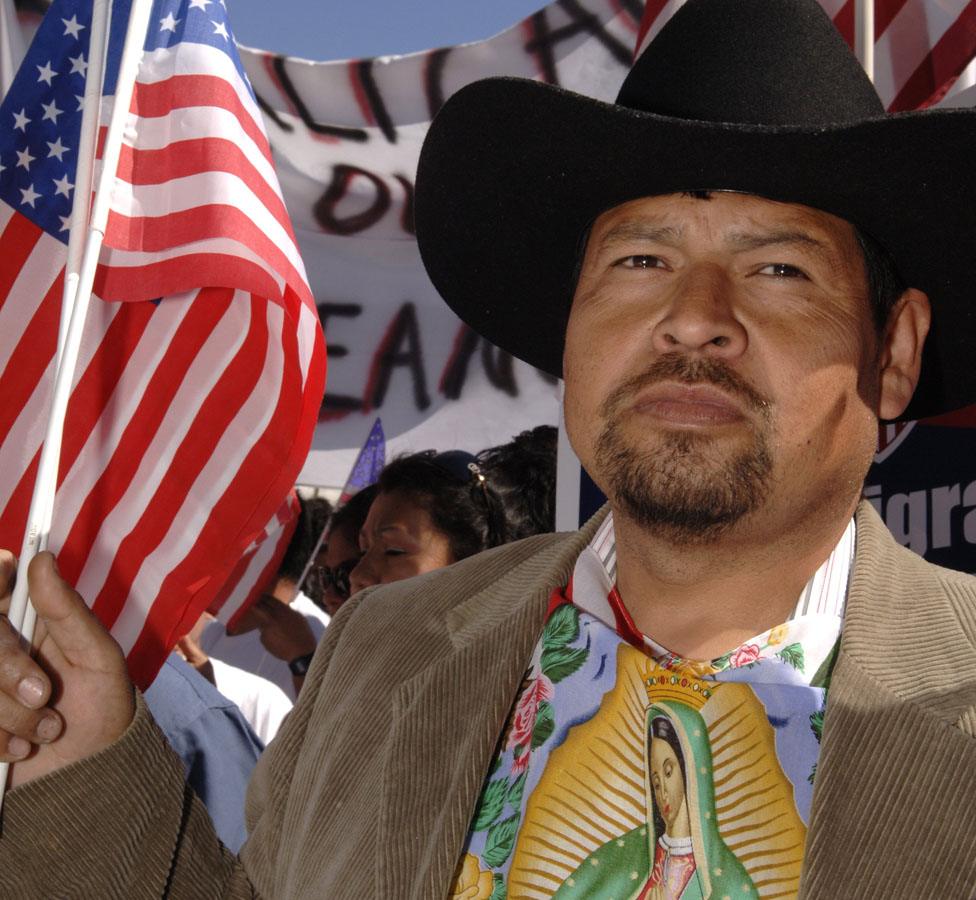
A Latino activist holds a US flag during a immigration protest in Dallas
Electoral votes: 38
Last time carried by a Democrat: 1976
2012 results: Mitt Romney 57%, Barack Obama 41%
Recent poll: Donald Trump 41%, Hillary Clinton 33%, external
Democrats have had their eyes on Texas - the "big enchilada", as Richard Nixon once called it - for more than a decade now, thanks to its increasing urbanisation and sizeable Hispanic population.
Although the state's major cities have turned decidedly Democratic, on a statewide basis it's been an electoral shoe that has stubbornly refused to drop.
That hasn't stopped Democratic candidates from making regular appearances in the Lone Star State, of course.
Mr Obama is a frequent visitor, and vice-presidential nominee Tim Kaine was there recently. Their usual goal, however, is to round up campaign cash from deep-pocketed Democratic donors - not to try to put the state in play in the November general election.
A Democrat hasn't won statewide office in Texas since 1994, and the electoral trendlines aren't exactly favourable. The party's infrastructure is still woefully outmatched by the Republicans, and in its 2014 gubernatorial nominee, Wendy Davis, won fewer votes than the Democratic candidate in 2008.
Texas is home to Senator Ted Cruz, one of the more prominent anti-Trump Republicans, however.
The former presidential candidate made headlines - and was booed off stage - when he pointedly declined to endorse the nominee at the Republican National Convention last month.
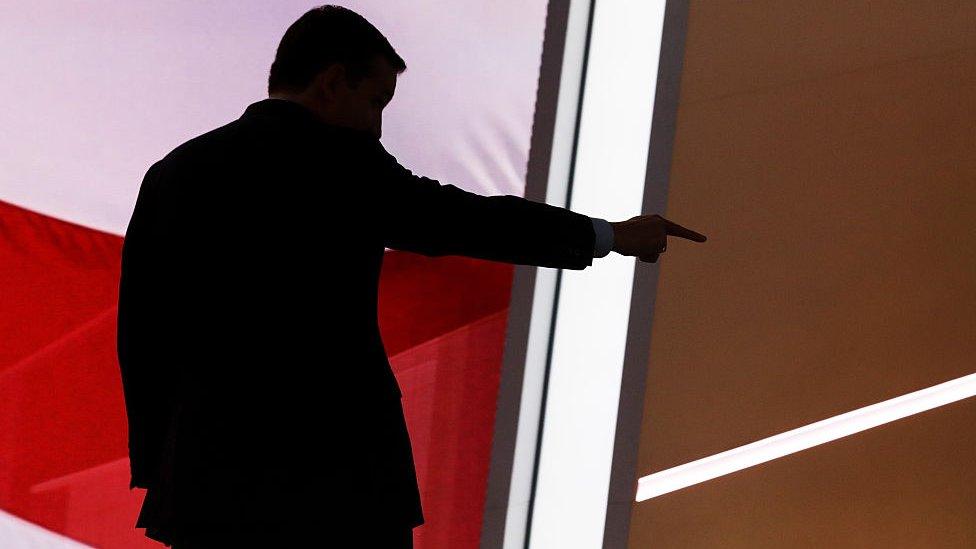
Will Ted Cruz's "vote your conscience" make a difference in Texas?
If Texas Hispanics head to the polls in larger numbers and some Republicans heed Mr Cruz's call to vote their conscience and break from Mr Trump - particularly in the state's voter-rich suburbs that traditionally trend Republican - Texas could be in reach for Mrs Clinton.
Prognosis: The Lone Star State has been a political oasis for Democrats that perpetually shimmers on the horizon. California was once a reliably conservative state that eventually turned Democratic thanks to demographic changes.
While Texas liberals hope their home will enjoy the same fate, on election day the oasis usually turns out to be a mirage.
If this year is different, it likely means Mrs Clinton is winning in a walk - and Republicans in future presidential campaigns should be very, very worried.

Pennsylvania
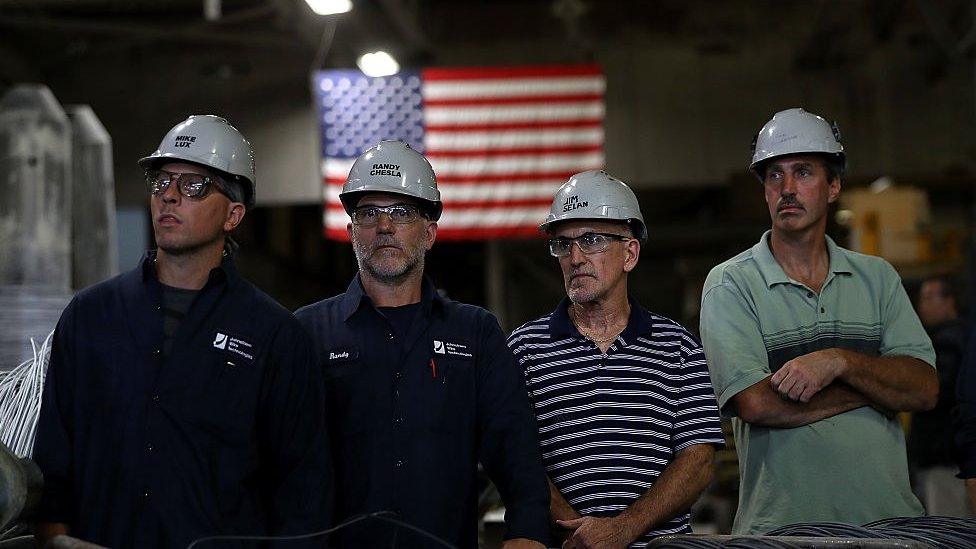
Pennsylvania steel workers at Clinton rally
Electoral votes: 20
Last time carried by a Republican: 1988
2012 results: Barack Obama 52%, Mitt Romney 47%
Recent poll: Hillary Clinton 48%, Donald Trump 37%, external
It wasn't too long ago that the all the map-shifting talk centred around how Mr Trump's play for Pennsylvania and the industrial Mid-west states would put Mrs Clinton on her heels.
Mr Trump's anti-trade, anti-immigration rhetoric has certainly made inroads into traditionally Democratic voters in the so-called Rust Belt - states like Pennsylvania, Ohio and Michigan - that relied heavily on manufacturing and steel jobs that have since moved overseas.
The problem for the Republican nominee in the Keystone State, however, is that while he's picking up support in the rural western areas of Pennsylvania, he's currently being routed in the state's two largest cities, Pittsburgh and Philadelphia, and their white-collar suburbs.
A recent Franklin & Marshall poll of Pennsylvania illustrates this. While Mr Trump has seen a 23% increase in south-western Pennsylvania, he's being trounced in Philadelphia and it's surrounding areas. Barack Obama won there by 9% in 2012. Mrs Clinton, according to the poll, external, currently has a 40% lead - which helps explain why she's up by double-digits statewide.
Prognosis: Democratic strategist James Carville likes to quip that Pennsylvania is Pittsburgh and Philadelphia "with Alabama in between".
The conservative portions of the state could go big for the Republican, but if he can't stay competitive in the populous cities, he'll lose.
- Published2 August 2016
- Published22 July 2016
- Published21 July 2016